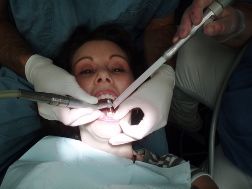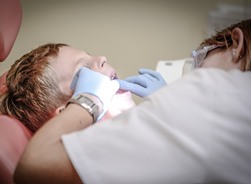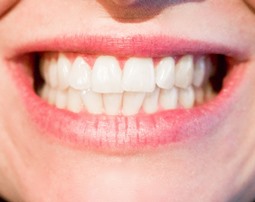How to Enroll In a Dental Hygienist Training Program near Clinton Minnesota
 Selecting the ideal dental hygienist college near Clinton MN is an essential initial step toward starting your new career in dentistry. But before you can make your choice, you need to examine and compare your school options. There is far more to doing your due diligence than picking the program with the lowest tuition or enrolling in the program that is closest to your residence. There are other important issues to consider also, including the school’s accreditation and reputation. Dental hygienists generally earn an Associate Degree, as compared to a certificate usually earned by assistants, and can take anywhere from two to three years to finish. Naturally with the lengthier training of a hygienist comes more expense. We will cover all of these considerations and supplemental questions that you need to be asking the dental hygienist schools you are looking at later in this article. But first, let’s look at the roles of dental hygienists and the training programs offered.
Selecting the ideal dental hygienist college near Clinton MN is an essential initial step toward starting your new career in dentistry. But before you can make your choice, you need to examine and compare your school options. There is far more to doing your due diligence than picking the program with the lowest tuition or enrolling in the program that is closest to your residence. There are other important issues to consider also, including the school’s accreditation and reputation. Dental hygienists generally earn an Associate Degree, as compared to a certificate usually earned by assistants, and can take anywhere from two to three years to finish. Naturally with the lengthier training of a hygienist comes more expense. We will cover all of these considerations and supplemental questions that you need to be asking the dental hygienist schools you are looking at later in this article. But first, let’s look at the roles of dental hygienists and the training programs offered.
[campusexplorer header_text=”Find Dental Hygienist Schools Near You!” aos=”75346615″ concentration=”2D77CE61″ tracking=”DENTHYG”]
The Duties of a Dental Hygienist
 When contrasting the job of a dental hygienist to that of an assistant, the main difference is undoubtedly that the hygienist works more on their own. Dental assistants work with and in support of the Clinton MN practice and the dentists. Hygienists, while also supporting the practice, deal with the patients more on a one-to-one basis. They are usually the first person a patient encounters when called from the waiting room. They examine each patient’s gums and teeth and report their results to the dentists. They may also perform basic procedures. Based on state law, a hygienist’s responsibilities can include:
When contrasting the job of a dental hygienist to that of an assistant, the main difference is undoubtedly that the hygienist works more on their own. Dental assistants work with and in support of the Clinton MN practice and the dentists. Hygienists, while also supporting the practice, deal with the patients more on a one-to-one basis. They are usually the first person a patient encounters when called from the waiting room. They examine each patient’s gums and teeth and report their results to the dentists. They may also perform basic procedures. Based on state law, a hygienist’s responsibilities can include:
- Removing tartar, stains and plaque
- Administering fluoride treatments
- Polishing teeth and applying sealants
- Educating patients about oral care
- Taking X-rays and developing film
- Removing sutures and applying fillings
In order to be licensed in almost all states, dental hygienists must graduate from a Commission on Dental Accreditation (CDA) accredited dental hygiene program. They must also pass the National Board Dental Hygiene Exam in addition to passing any state licensing exams. After they have fulfilled these requirements they are considered fully licensed and may add the “RDH” designation to their names, signifying Registered Dental Hygienist.
Dental Hygienist Education Options
As a result of the additional responsibility in contrast to an assistant, dental hygienists employed in Clinton MN dental practices are often required to hold an Associate Degree in dental hygiene rather than a certificate. These programs can take anywhere from two to as long as three years to finish and must be accredited by the CDA in virtually every state. They are offered in trade and technical schools as well as community colleges. And in addition to classroom studies learning the fundamentals of dental hygiene, there will be a clinical component to the training as well| Many programs also offer internships with local dental practices or dentists.
Online Dental Hygienist Training
 Choosing an online dental hygienist college might be a great option for obtaining your education. Just keep in mind that the classes will not be completely online, since there will be a practical component to your training. But the remainder of your classes will be provided by means of your desktop computer in the comfort of your Clinton MN home or elsewhere on your laptop or tablet. For those continuing to work while attending school, online dental programs make education a lot more accessible. Some may even charge lower tuition fees than their traditional counterparts. And supplementary expenses such as for books, school supplies and commuting may be reduced as well. The clinical training can typically be performed at a community dental office or in an on-campus lab. With both the clinical and online training, everything required to receive the proper education is furnished. If you have the discipline for this method of learning, you might find that attending an online dental hygienist program is the best option for you.
Choosing an online dental hygienist college might be a great option for obtaining your education. Just keep in mind that the classes will not be completely online, since there will be a practical component to your training. But the remainder of your classes will be provided by means of your desktop computer in the comfort of your Clinton MN home or elsewhere on your laptop or tablet. For those continuing to work while attending school, online dental programs make education a lot more accessible. Some may even charge lower tuition fees than their traditional counterparts. And supplementary expenses such as for books, school supplies and commuting may be reduced as well. The clinical training can typically be performed at a community dental office or in an on-campus lab. With both the clinical and online training, everything required to receive the proper education is furnished. If you have the discipline for this method of learning, you might find that attending an online dental hygienist program is the best option for you.
Topics to Cover With Dental Hygienist Colleges
 Now that you have decided to become a dental hygienist in Clinton MN, you can start the process of comparing schools and programs. As we discussed at the opening of this article, many students begin by looking at the location and the cost of the schools. Possibly they look for several online alternatives also. Although these are relevant initial factors to consider, there are a few additional questions that you should address to the schools you are looking at in order to arrive at an informed decision. Toward that end, we have supplied a list of questions to assist you with your evaluation and final selection of the best dental hygienist program for you.
Now that you have decided to become a dental hygienist in Clinton MN, you can start the process of comparing schools and programs. As we discussed at the opening of this article, many students begin by looking at the location and the cost of the schools. Possibly they look for several online alternatives also. Although these are relevant initial factors to consider, there are a few additional questions that you should address to the schools you are looking at in order to arrive at an informed decision. Toward that end, we have supplied a list of questions to assist you with your evaluation and final selection of the best dental hygienist program for you.
Is the Dental Program Accredited? There are several valid reasons why you should only pick an accredited dental hygienist college. If you are going to become certified or licensed, then accreditation is a requirement in virtually all states. In order to take the National Board Dental Hygiene Examination, your dental program must be accredited by the Commission on Dental Accreditation (CDA). Accreditation also helps ensure that the instruction you get is comprehensive and of the highest quality. Clinton MN employers frequently desire or require that new hires are graduates of accredited schools. And last, if you are requesting financial aid or a student loan, often they are not obtainable for non-accredited colleges.
Is Sufficient Clinical Training Provided? Clinical or practical training is an essential part of any dental training program. This holds true for the online school options also. A number of dental hygienist colleges have partnerships with local dental practices and clinics that provide practical training for their students. It’s not only imperative that the program you select provides enough clinical hours but also provides them in the kind of practice that you ultimately would like to work in. As an example, if you have an interest in a career in pediatric dentistry, check that the school you select offers clinical rotation in a local Clinton MN dental office that specializes in dental services for children.
Is There an Internship Program? Find out if the dental colleges you are exploring sponsor an internship program. Internships are undoubtedly the best method to get hands-on, clinical experience in a professional dental practice. They help students to transition from the theoretical to the practical. They can also help students develop working relationships in the professional dental community. And they are attractive on resumes too.
Is Job Placement Support Offered? Many graduating students of dental hygienist programs require assistance obtaining their first job. Check if the schools you are reviewing have job placement programs, and what their job placement rates are. Schools with higher job placement rates are likely to have good reputations within the Clinton MN dental profession in addition to extensive networks of contacts where they can position their students for employment or internships.
Are Classrooms Small? Find out from the schools you are reviewing how big typically their classes are. The smaller classes usually provide a more intimate environment for training where students have greater access to the instructors. On the other hand, large classes tend to be impersonal and offer little individualized instruction. If feasible, find out if you can monitor a few classes at the Clinton MN dental hygienist school that you are most interested in in order to experience first hand the amount of interaction between instructors and students before enrolling.
What is the Total Cost of the Program? Dental hygiene training can differ in cost based on the length of the program and the amount of practical training provided. Other variables, for instance the reputations of the schools and if they are public or private also have an impact. But along with the tuition there are other substantial costs which can add up. They can include costs for such things as textbooks and commuting as well as school equipment, materials and supplies. So when comparing the cost of colleges, remember to include all of the expenses associated with your education. The majority of colleges have financial aid departments, so make sure to ask what is offered as far as loans, grants and scholarships in the Clinton MN area.
Are the Classes Accessible? Before selecting a dental hygienist school, you must make sure that the assistant or hygienist program provides classes that fit your schedule. This is especially true if you continue working while acquiring your education and have to attend classes near Clinton MN at nights or on weekends. And even if you select an online program, you will still be required to schedule your clinical training classes. Also, while addressing your concerns, ask what the make-up protocol is if you should have to miss any classes due to work, illness or family emergencies.
Attending Dental Hygienist School near Clinton MN?
Clinton, Minnesota
According to the United States Census Bureau, the city has a total area of 1.03 square miles (2.67 km2), of which, 0.95 square miles (2.46 km2) is land and 0.08 square miles (0.21 km2) is water.[1] Clinton is the home to the Big Stone County Fair and Clinton-Graceville-Beardsley Elem. School.
As of the census[2] of 2010, there were 449 people, 201 households, and 115 families residing in the city. The population density was 472.6 inhabitants per square mile (182.5/km2). There were 255 housing units at an average density of 268.4 per square mile (103.6/km2). The racial makeup of the city was 99.6% White and 0.4% from other races. Hispanic or Latino of any race were 1.3% of the population.
There were 201 households of which 26.9% had children under the age of 18 living with them, 45.8% were married couples living together, 7.5% had a female householder with no husband present, 4.0% had a male householder with no wife present, and 42.8% were non-families. 36.8% of all households were made up of individuals and 20.4% had someone living alone who was 65 years of age or older. The average household size was 2.21 and the average family size was 2.93.
The median age in the city was 43.6 years. 23.2% of residents were under the age of 18; 6.3% were between the ages of 18 and 24; 21.8% were from 25 to 44; 26% were from 45 to 64; and 22.5% were 65 years of age or older. The gender makeup of the city was 47.7% male and 52.3% female.
Select the Ideal Dental Hygienist College near Clinton MN
Choosing the ideal dental hygienist program is important if you wish to take the National Board Dental Hygiene examination or, if mandated in your state, become licensed. As we have covered, there are several alternatives available to acquire your training and it takes a relatively short period of time to become a dental hygienist. You can obtain your formal education through dental programs at community colleges, technical institutes, trade schools and vocational schools. Graduates of these schools normally receive an Associate Degree. Dental Hygienists generally require approximately two years of studies before they enter the job market. When pursuing a degree you can elect to attend classes online or on-campus. Whichever mode of training you choose to pursue, by addressing the questions provided in this article you will be in a better position to make the ideal selection. And as a result, you will be ready to start your journey toward becoming a dental hygienist in Clinton MN.
More Great Cities in Minnesota
Business Results 1 - 10 of 1


